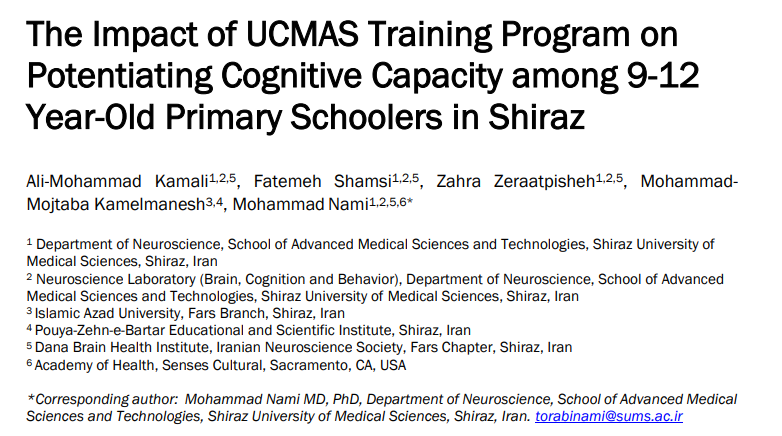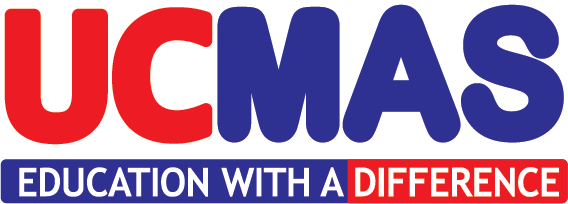
The Impact of UCMAS Training Program on Potentiating Cognitive Capacity among 9-12 Year-Old Primary Schoolers in Shiraz
Several arithmetic operations including addition, subtraction, division, root, etc can be done using an abacus by well-trained abacus users.
Introduction
Performing precise numerical computation is a unique characteristics of adult humans which distinguishes them from other animals (1). Several devices such as paper and pencil, calculators and computers are used by most people for this purpose(2). Another device which is still widely used in Asian countries for arithmetic calculations is an abacus, a simple and traditional instrument composed of beads and rods in which the location of beads represents numbers (3).
Several arithmetic operations including addition, subtraction, division, root, etc can be done using an abacus by well-trained abacus users. Some such persons are so skillful that are able to perform calculations not only physically but also mentally using an imagery abacus. This skill is called abacus-based mental calculation(4) and is known as Universal Concept of Mental Arithmetic System or UCMAS nowadays. People with an extraordinary ability in performing both abacus-based mental and physical calculations because of long-term training are called abacus experts. In UCMAS, probably, these people have the ability of moving the imagery abacus beads in their mind faster than that of a physical abacus(5). In UCMAS training, mental arithmetic training such as working memory is included (6). This is a wellknown idea that practice and experience can cause fundamental changes in the organization of cerebral cortex in adults. From the cognitive viewpoint, finding a mental solution for arithmetic problems requires integration of several cognitive functions including identification and manipulation of numbers in working memory, temporary storage and then retrieval meanwhile implementing basic arithmetic rules for control of different steps(7).
The neural mechanisms involved in mental calculation have been studied in UCMAS experts by some fMRI studies. An association between digit working memory and mental computation and an increase in neural resources for processing visuospatial information in adult experts of UCMAS has been reported by some studies. Furthermore, a study reported
more fractional anisotropy in white matter of brain in children who were trained in UCMAS compared to untrained children using diffusion tensor imaging. According to previous studies, enhanced memory capacity and improved integrity of white matter tracts especially those involved in motor and visuospatial processes may result from long-term UCMAS training
started from childhood(4).
Given the influence of UCMAS training on improvement of individual’s skills and increasing accuracy and decreasing reaction time, Li et al.(2013) evaluated the influence of UCMAS training on digit working memory in children. Measuring the brain activity patterns using fMRI in both trained and untrained children during digit working memory performance showed more activity in some brain areas including the right posterior superior parietal lobule, superior occipital gyrus and supplementary motor area in trained children compared to controls(8). In addition, EEG and ERP studies have shown that numerical information processing in UCMAS trained children becomes faster and automatic because of the improved relationship between symbolic representation and numerical value(9). In addition to neuroimaging studies, the influence of UCMAS training on cognitive brain functions has been evaluated by some behavioral studies. In a study by Na et al. (2015), the effect of UCMAS training on memory, attention and arithmetic abilities was evaluated; better arithmetic ability and fewer commission errors were observed in UCMAS group compared to the control (10). Furthermore, evaluation of UCMAS training effect on math ability and executive function after 1 and 3 years of training showed that the performance of trained children in math and visuospatial domains
was better than that of their untrained peers(11).
According to previous studies, it seems that UCMAS training can enhance cognitive functions by reinforcement of neural mechanisms underlying visuospatial attention. So, the present study was aimed to compare the objective testing score of Less-trained (≤6 months of training) and experienced (≥36 months of training) UCMAS trained children in Shiraz using Cambridge Brain Sciences Computerized Platform.
